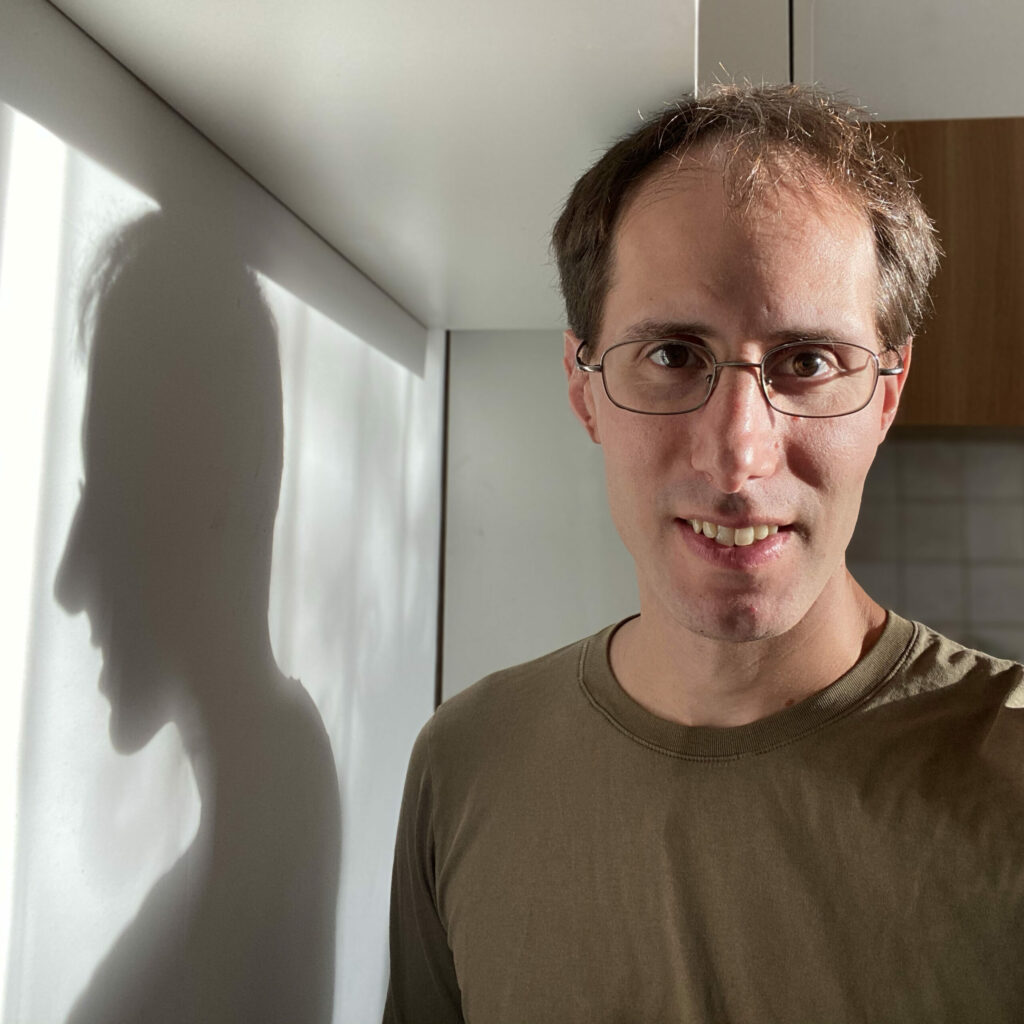
Member Profile: Yotam Gingold
1. What do you do, and how long have you been doing it?
I’m an associate professor of computer science at George Mason University. I’ve been here since 2012. I direct the Computational Reality, Creativity, and Graphics Lab (CraGL). What I “do” is what I imagine startup founders do. I hire (students) and we work on ideas with no guarantee of success (research). I also raise money (grant writing) and do marketing (writing SIGGRAPH papers, giving talks). At least, this is what I imagine startup life is like. Oh, and I also teach classes.
2. What was your first job?
This is a surprising question. I remember making paper packets of dandelion seeds and selling them at a garage sale when I was a child. In high school, I was a soccer referee. The first business cards I ever had were ones I made for doing computer work around town. I spent a lot of time on the graphic design, but somehow missed a typo in the word “software.” The chair of the statistics department at the nearby university (WVU) saw my cards and gave me regular hours. My first jobs related to computer graphics were in college. I was a teaching assistant for Andy van Dam’s computer graphics course (cs123). I spent a summer as an undergraduate research assistant of John Hughes (Spike). Between graduating and starting graduate school, I worked in Andy van Dam’s graphics group.
3. Where did you complete your formal education?
I went to high school at Morgantown High School and took math classes at West Virginia University.I got my bachelors degree from Brown University. (It was a joint Computer Science and Math degree.)I got my Ph.D. from New York University. A Ph.D. is like what I imagine an apprenticeship was in the middle ages, so perhaps it’s more accurate to say I got my Ph.D. from my advisor Denis Zorin.
4. How did you first get involved with ACM SIGGRAPH?
My first SIGGRAPH conference was Boston 2006. I had a paper at the ACM SIGGRAPH Symposium on Video games (Sandbox).
5. What is your favorite memory of a SIGGRAPH conference?
SIGGRAPH 2019. It was my first time away from my family since the birth of my second child. I felt very guilty. I got to sleep in until 8am. I went to a facebook party in a skyscraper. There was a pixel art Instagram logo made out of donuts. There was a glass-bottomed “skyslide” hanging off the building from the 70th floor to the 69th. I waited six months to tell my wife these things I’ve just told you.
6. Describe a project that you would like to share with the ACM SIGGRAPH community.
We recently started a Junior Scientist Mentoring program as part of the SIGGRAPH Research Career Development Committee. As an academic, it’s really helpful to have a mentor from inside your subfield. Many people don’t have access to graphics mentors in their own departments. The Junior Scientist Mentoring program is a way to connect people with mentors at other institutions. Justin Solomon deserves a lot of credit for gathering people who are passionate about computer graphics research to work on various initiatives. The Junior Scientist Mentorship committee was a natural fit for me.
7. If you could have dinner with one living or non-living person, who would it be and why?
I would like to have dinner with someone 1000 years in the future. I have a lot of questions I think they could answer.
8. What is something most people don’t know about you?
I caused erroneous information to be published in Rolling Stone magazine. It was unintentional.
9. From which single individual have you learned the most in your life? What did they teach you?
I can’t answer this without offending someone. I didn’t thank my wife in the acknowledgments of my Ph.D. dissertation. She’ll never let me forget it. In my defense, we weren’t married yet. In her defense, she thanked me in hers. I’m feeling brave, so I’ll answer this question. The single individual from whom I’ve learned the most in my life is my wife. She’s a clinical psychologist. She taught me to reflect and understand the source of my motivations and anxieties. It’s really helped with SIGGRAPH deadlines.
10. Is there someone in particular who has influenced your decision to work with ACM SIGGRAPH?
Informally, my interest in math comes from my father, my interest in computers comes from my brother, my interest in the brain comes from my mother, and my interest in production comes from my sister. Formally, my undergraduate professors Andy van Dam and John Hughes (Spike) introduced me to SIGGRAPH. Computer graphics and interactive techniques are a natural intersection of my interests.
11. What can you point to in your career as your proudest moment?
My first two PhD students’ first SIGGRAPH papers (Songrun Liu and Jianchao Tan). As a professor, my students entrust me with their youth and vitality. It’s my responsibility to help them spend it well with projects they like and can succeed in. Until my students’ first SIGGRAPH papers were accepted, I had a lot of self-doubt.